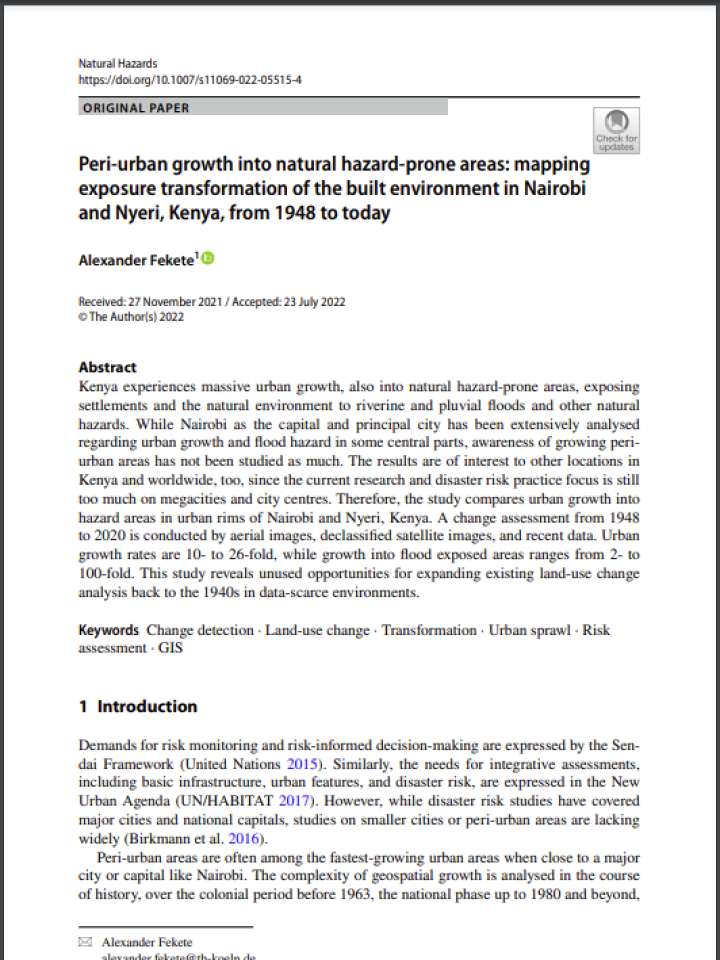Peri-urban growth into natural hazard-prone areas: mapping exposure transformation of the built environment in Nairobi and Nyeri, Kenya, from 1948 to today
The study compares urban growth into hazard areas in urban rims of Nairobi and Nyeri, Kenya. A change assessment from 1948 to 2020 is conducted by aerial images, declassified satellite images, and recent data. Urban growth rates are 10- to 26-fold, while growth into flood-exposed areas ranges from 2- to 100-fold. Such results can be an estimate for urban planners and disaster risk management institutions on increasing risk and exposure. The satellite and aerial images can also help to point out former land coverage such as river beds or wetlands that can pose risks such as risks related to groundwater or heavy rain.
This study highlights that though visual mapping is time-consuming and limited to detecting certain natural hazards such as floods or landslides, droughts, or wildfires, it is a good starting point for risk mapping and expanding the application of remote sensing data. Such temporal monitoring of exposure to natural hazards can help inform a static risk and the dynamics of risk components such as urban expanse and settlement on former riverine areas over time. Mapping spatial exposure transformation can therefore be understood as a tool helping to document and understand a larger transformation.
Explore further
